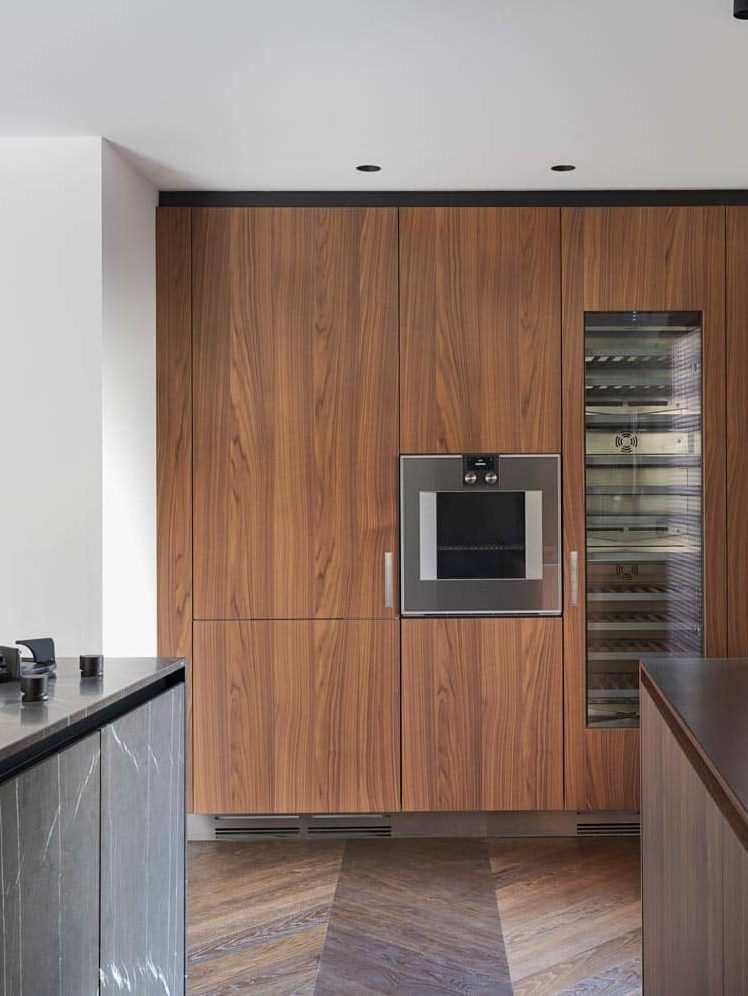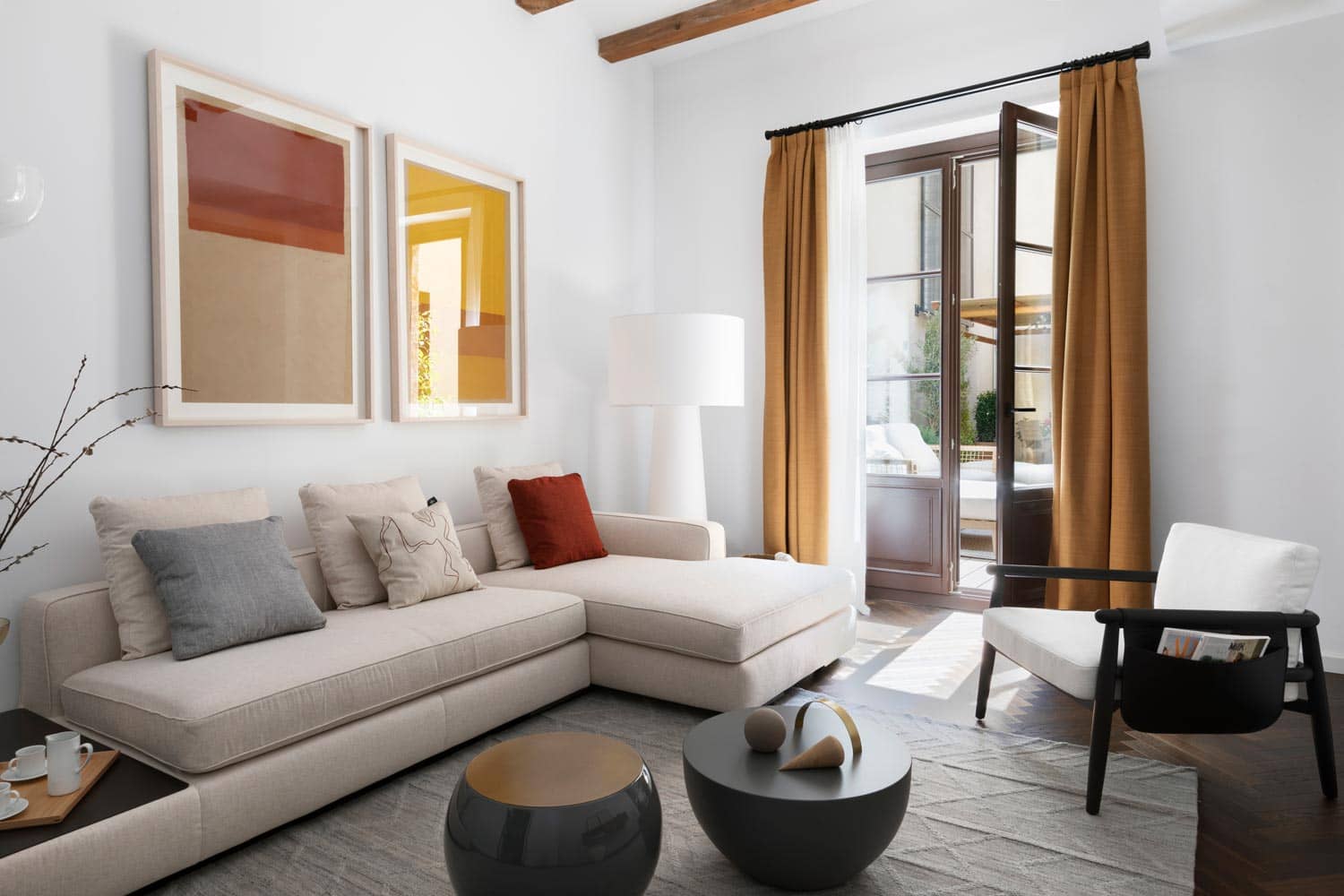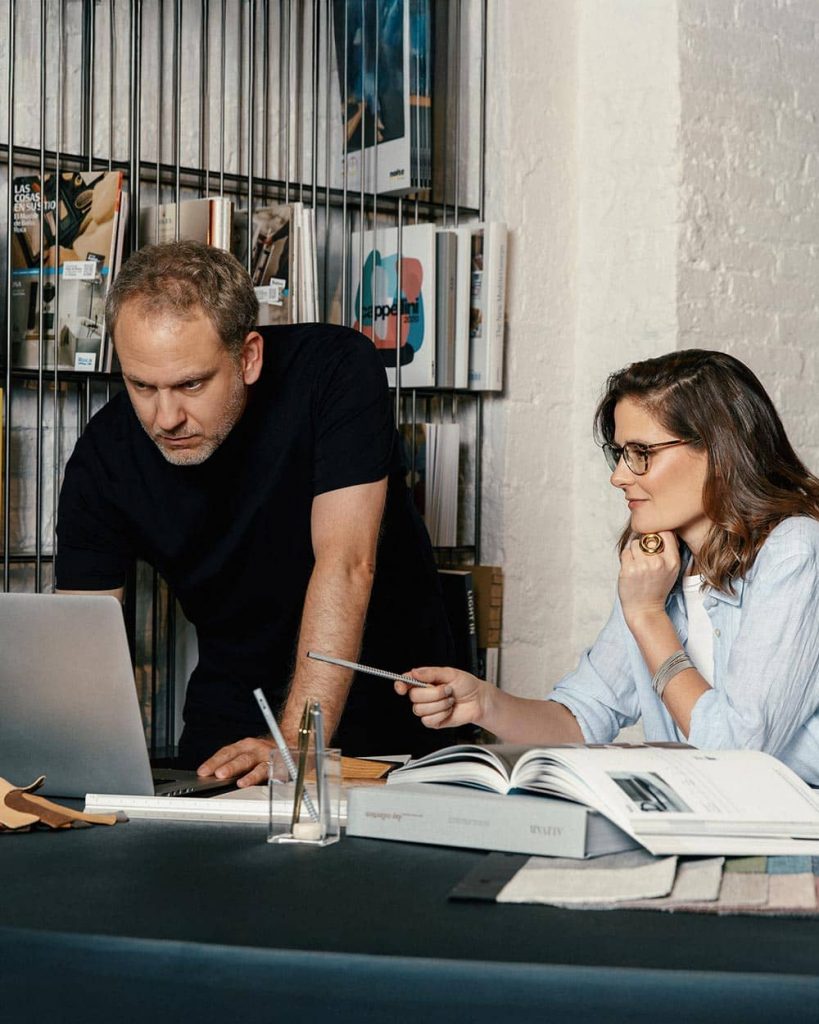TRENDS IN LUXURY INTERIOR DESIGN 2025
Luxury interior design in 2025 continues its shift toward balance—where beauty meets functionality, and exclusivity meets authenticity. Clients are asking for interiors that not only look exceptional but also feel meaningful, tactile and timeless.
At our studio, we interpret these trends through the lens of craftsmanship, personalisation and spatial awareness—especially in a European context like Barcelona. Below we explore the key movements shaping luxury interiors this year.
Elevated natural materials and finishes
In 2025, luxury is defined by refinement rather than excess, and nothing embodies this better than natural materials used with intent. We’re seeing a clear focus on rich, tactile surfaces—stones with dramatic veining, textured woods, and subtly imperfect finishes that speak to authenticity and origin.
These materials create a sense of permanence and connection, moving away from highly polished or synthetic alternatives. In our own projects, we favour materials that age gracefully and hold visual depth—limestone, walnut, brushed metal, or ceramic with natural glaze.
The palette remains warm and earthy, complementing Barcelona’s architectural tones and Mediterranean light. It’s not just about aesthetics, but also about creating sensory environments.

Personalisation as the new definition of luxury
High-end interiors in 2025 are less about following a style and more about reflecting the identity and preferences of the people living in them. Instead of curated showrooms, we design homes that feel lived-in, layered and emotionally connected to the client.
This means working closely with each person to understand how they live, what inspires them, and what objects or materials hold meaning. Whether it’s incorporating a collection of artworks, sourcing unique furnishings, or collaborating with local artisans, the result is a space with narrative and depth.
Personalisation doesn’t mean eclecticism; it means design that resonates on an individual level, both functionally and emotionally.

Softer shapes and architectural curves
Architecture and furniture alike are embracing fluidity. In contrast to the minimalism of past decades, 2025 luxury trends introduce softness—not just visually, but in how spaces are experienced.
Arched doorways, curved walls, and organically shaped furniture invite a slower, more comforting rhythm. These elements create a flow that feels natural and intuitive, especially in smaller or older homes where rigid lines can feel imposed.
At our studio, we’ve used curves to solve spatial challenges while also adding elegance—whether it’s in custom cabinetry, integrated seating, or a sculptural headboard. This return to softness is part of a larger movement toward human-centric design.
Discreet integration of technology
Technology plays a vital role in luxury interiors—but in 2025, it does so discreetly. Clients increasingly seek environments where convenience and innovation are present, but never on display.
Lighting systems, climate control, security, and audiovisual tools are seamlessly embedded into architecture and joinery. Voice-activated lighting, hidden speakers, and wireless charging built into surfaces are no longer novelties but expectations. In our projects, we integrate smart systems early in the design process so they align with the home’s layout and aesthetic.
The result is a living experience that feels effortless—luxury defined by ease, not flash.

Sustainability as a core principle
Environmental awareness is no longer an afterthought in high-end design. Today’s luxury clients understand that sustainability and quality go hand in hand.
The trend is toward long-lasting materials, local sourcing, and design strategies that reduce waste over time. In 2025, sustainability is quiet but intentional—seen in reclaimed woods, low-impact paints, or solar shading systems that reduce energy use without compromising aesthetics. More importantly, it’s reflected in timeless design decisions that avoid the need for frequent renovation.
Our approach emphasises what will endure—not only in materials, but in layouts and aesthetics. This is the new form of responsibility in luxury: creating spaces built to last.
Global aesthetics, local sensitivity
In 2025, global influences continue to shape high-end interiors, but they are always filtered through a strong sense of place. In Barcelona, for example, we see increasing demand for Mediterranean materials—terracotta, lime plaster, woven textiles—reinterpreted in clean, contemporary forms.
The result is a design language that’s both rooted and refined. Clients moving from abroad often want a space that feels distinctly “of Barcelona” while still expressing their own tastes.
Our role as designers is to navigate that balance—bringing in cultural richness while avoiding clichés. The most successful luxury interiors today honour their context while remaining globally relevant.
Why work with a studio that understands these trends
Trends alone are not enough. What matters is how they are applied to the realities of each space and client. Our studio doesn’t simply follow what’s new—we interpret it through the lens of your needs, your property, and your lifestyle.
We bring a deep understanding of materials, spatial flow, and project execution to ensure the final result is beautiful, functional, and enduring. If you’re thinking about a renovation or a new home in 2025, we can help you design a space that reflects today’s best thinking—while staying true to your personal vision.


